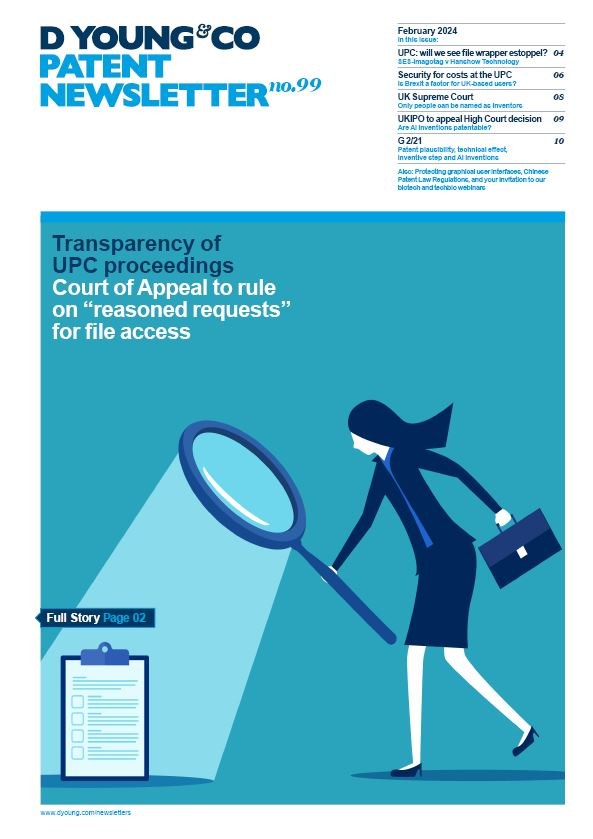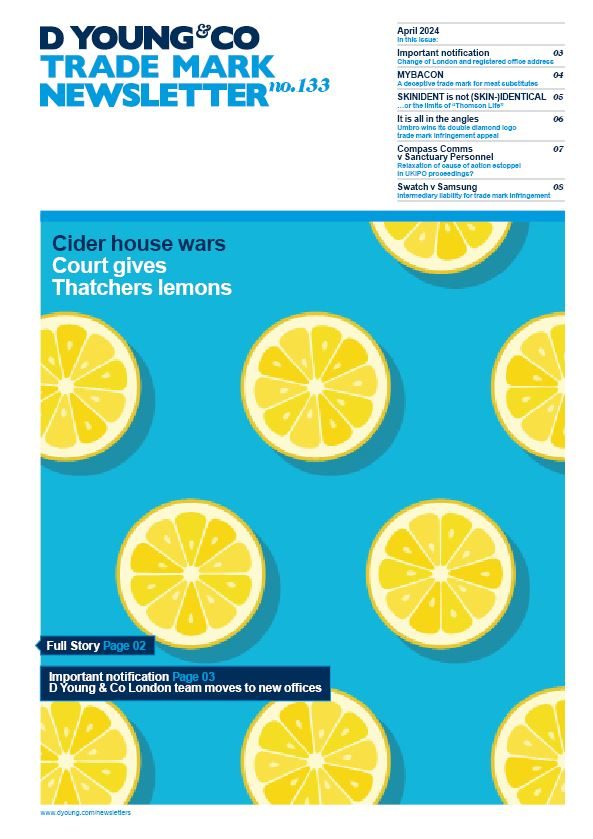AG opinion in 'thorny issue' of Truvada SPC case
Advocate General (AG) Wathelet has given his opinion in relation to the question referred by the English Court concerning the interpretation of Article 3(a) of the supplementary protection certificate (SPC) regulation, particularly what are the criteria for deciding whether a product [see note 1 below] is “protected by a basic patent”.
The AG has answered the question as follows: “A product is protected by a patent within the meaning of Article 3(a) of that regulation if, on the priority date of the patent, it would have been obvious to a person skilled in the art that the active ingredient in question was specifically and precisely identifiable in the wording of the claims of the basic patent. In the case of a combination of active ingredients, each active ingredient in that combination must be specifically, precisely and individually identifiable in the wording of the claims of the basic patent.”
The opinion is not binding on the Court of Justice of the European Union (CJEU) but if it is followed it will likely make obtaining SPCs more difficult, particularly where the basic patent does not explicitly disclose the active ingredient(s).
In reaching his conclusions the AG rejected the proposal of the English Court and Gilead on the correct interpretation of Article 3(a). However the AG provided little guidance of his own on what is meant by “specifically and precisely identifiable”. As such, if this opinion is followed, it seems unlikely that this will be the last referral on the interpretation of Article 3(a) of the SPC regulation.
Background
Gilead is the owner of a SPC (SPC/GB05/041) protecting the product TRUVADA which contains a combination of tenofovir disoproxil and emtricitabine as active ingredients for treating HIV infection.
The basic patent (EP0915894) on which the SPC is based expired in 2017. A number of pharmaceutical companies (Teva, Accord, Lupin and Generics UK) challenged the validity of the SPC in the English Court on the basis that the basic patent did not protect the product.
The claim in the basic patent relates to “A pharmaceutical composition comprising [tenofovir disoproxil] together with a pharmaceutically acceptable carrier and optionally other therapeutic ingredients.”
Teva et al essentially argued that following the previous decisions of the CJEU in Medeva [see note 2 below] and Daiichi Sankyo [see note 3 below], the product had to be “specified (or identified) in the wording of the claims [see note 4 below]. They noted that emtricitabine was not mentioned anywhere in the basic patent, nor was there any evidence that it was known to be efficacious at the priority date.
Gilead took the view that since the product falls within the scope of protection of claim 27, then that was sufficient.
The judge was of the opinion that despite the previous CJEU decisions the situation remained unclear and instead put-forward a test in which the ‘core inventive advance’ of the basic patent was to be taken into consideration.
Discussion
The AG roundly rejected the ‘core inventive advance’ test suggested by the judge, as potentially giving rise to confusion with the requirements of patentability. Instead the AG recognized that only the wording of the claims is to be used in determining whether a product is “protected by a basic patent”.
In doing so, the AG noted that the name of the active ingredient or its chemical composition need not be referred to expressly in the claims, thus potentially giving rise to the possibility of a product being defined in the claims functionally or by a Markush formula. However, the AG specifically dismissed the possibility of claims referencing a ‘diuretic’ or a ‘non-steroidal anti-inflammatory’ as not being sufficient.
Overall, the AG offered no clear test as to what is meant by “specifically and precisely identifiable”; although, unsurprisingly, in his view TRUVADA is not “protected by a basic patent” as there is no mention of emtricitabine anywhere in the basic patent.
Interestingly, in the AG’s view the test of whether a product is protected by a basic patent is to be determined on the priority date. This potentially gives rise to difficulties if the subsequently approved medicinal product is only included in the basic patent on filling, but is not present in the priority application.
Moreover, although outside the scope of the present case, the AG gave an unfavourable opinion of post grant amendments to include claims to approved combinations of active ingredients which were not in the originally granted claims, as was attempted in Actavis [see note 5 below].
Notes
- ‘Product’ means the active ingredient or combination of active ingredients of a medicinal product.
- Medeva (C 322/10, EU:C:2011:773).
- Daiichi Sankyo (C 6/11, EU:C:2011:781).
- The AG considered that these terms are synonymous and used by the CJEU interchangeably.
- Actavis Group PTC and Actavis UK (C 577/13, EU:C:2015:165).

